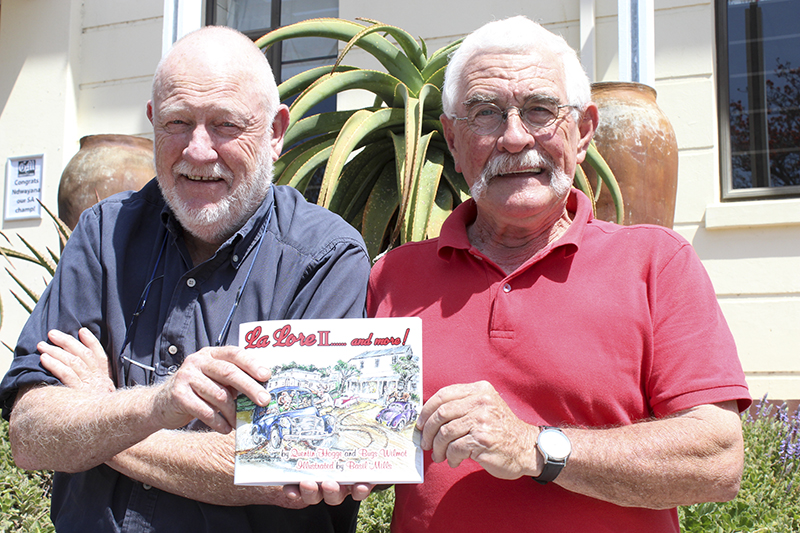LA Lore II
Quentin Hogge and Bugs Wilmot
Illustrated by Basil Mills
ISBN: 978-0-620-80250-5
Review by HARRY OWEN
Does anyone actually know how hot cakes sell? Quickly, presumably, and in considerable quantities.
That seems also to be the case with a new and already immensely popular book: LA Lore II…and more! by Quentin Hogge and Brian ‘Bugs’ Wilmot, a light-hearted, irreverent and iconoclastic compilation of stories from Lower Albany.
I have been dipping in and out of this book – superbly illustrated with Basil Mills’s appropriately quirky cartoons – because that is what it demands: it’s very much a lucky dip of narrative delights, some of which may or may not be entirely apocryphal, and you’re never sure quite what to believe. But that’s the fun – despite your suspicions, they all carry a whiff of truth about them. And you hope that they’re true!
Especially is this so for me in the tale of a bunch of arrogant Texan trophy hunters who sneeringly mock their hosts’ idea of a Thanksgiving turkey. It takes a year or so for their come-uppance to arrive, but when it does it’s worth waiting for!
Or in the story of a self-important local police officer and Lady Kemp’s python (buy the book if you want an explanation!). His officiousness, too, is thoroughly deflated to great student inebriated hilarity at the Graham Hotel.
It is this sense of puncturing pomposity, the conceit of those who consider themselves superior that pervades this wonderful collection – and in this the whole thing breathes that very special air so typical of Lower Albany. Farmers, golfers, teachers, students, professors, dogs, goats, horses, motorists, cops – all these and more find themselves centre-stage, and each one is a little gem that locals will recognizse and be amused by.
Neither do the co-authors spare themselves from the ignominy they serve up to others, as ‘The Romantic Tale of Bugs Wilmot and Stompie Morelli’ and ‘A Painful Blow on the Cricket Field’ amply demonstrate. For their wonderful self-mockery is also very much part of the pleasure this collection affords.
So, whether as a record “for posterity [of]that unique ethos, humour, spirit and culture of a small part of South Africa and the folk that live there”, as Judge Eric Leach writes in his Foreword, or simply as a fun-filled and slightly saucy piece of local story-telling, don’t fail to find this publication.
What a great Christmas gift it will make – far better than hot cakes!
Harry Owen



